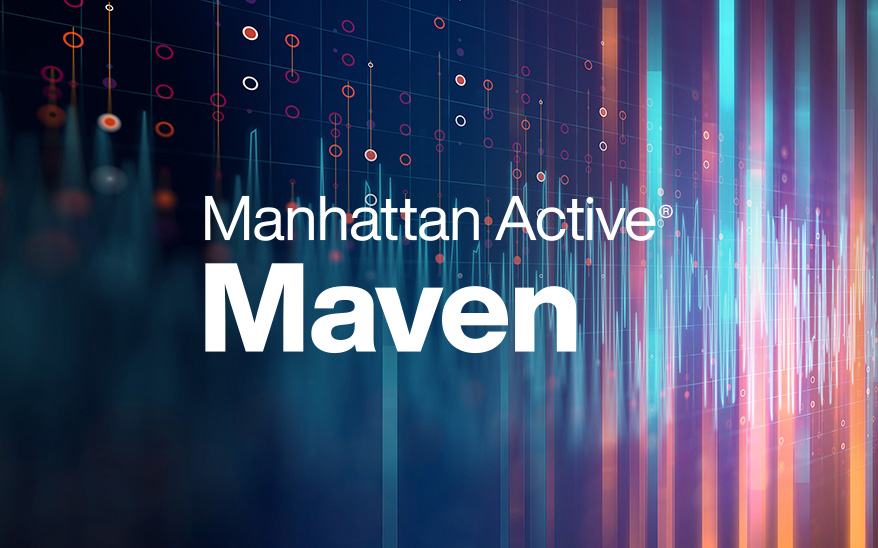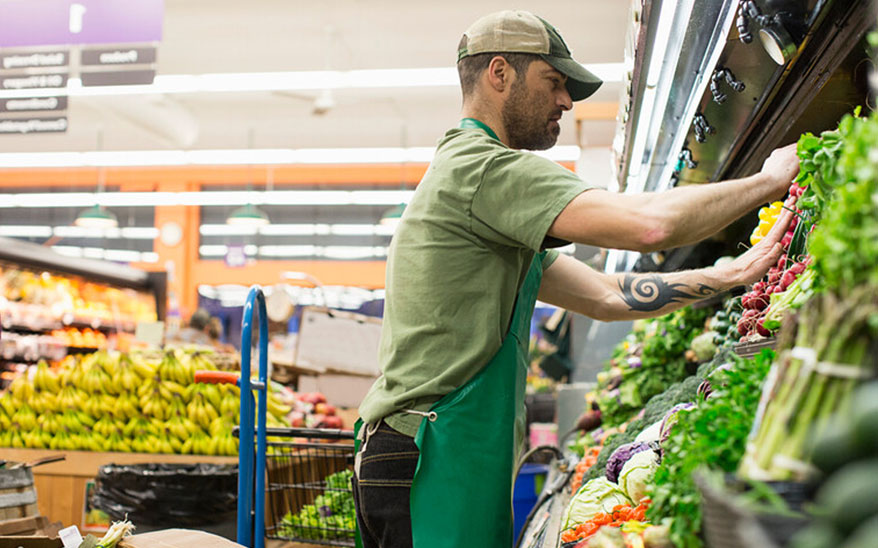Optimizing POS Usability for the Ever-Evolving Retail Landscape
- January 25, 2024

In this article, we will answer six burning questions mentioned in the recent webinar Optimizing UX Design for the Ever-Evolving Retail Technology Landscape hosted by Retail Dive and Manhattan and detail how retail associates can provide exceptional customer service with dynamic retail technology user experiences.
The rapidly changing retail landscape is putting constant stress on retail software usability. In today's competitive market, providing exceptional customer experiences relies heavily on empowering retail associates with the optimal user experience.
At Manhattan, we have developed innovative strategies and best practices for designing and implementing user-friendly software solutions tailored to meet the unique needs of enterprise retailers. By utilizing cutting-edge technology, data-driven insights, and user-centric design principles, retailers can drive customer satisfaction, boost operational efficiency, and ultimately leverage the technology tools needed to increase sales and reduce employee turnover.
Here are six burning questions on the current state of the retail industry and what retailers can do to provide the optimal retail user experience—leading to increased sales and more empowered associates—with the right technology capabilities:
Customer expectations have changed and brands are aiming to meet them. What has driven this incredible revolution and how are retailers aiming to adapt?
Today’s retail customer is digitally accustomed to convenience. As Manhattan Vice President of Retail Solutions Tony DiPaolo states, “One-third of the North American population is now younger than Amazon.” Customer demographics and, concurrently, consumer expectations have changed.
This new reality has driven convenience to the forefront of every consumer journey. Customers are more educated about products and more in touch with multiple digital channels, which leads to an expected convenient experience. Stores must do more now to address the needs of all selling channels and simultaneously the in-store experience. Physical retail locations have evolved from strictly “selling avenues” to also playing the role of the fulfillment center.
A digitally savvy generation consequently means a large portion of the population is constantly on mobile devices. Despite this, there are ways retailers can entice customers to come into the store and begin or continue their shopping journey. Retailers need to give customers a reason to go into the store and experience a product in ways that they can’t online. Due to being accustomed to convenience with digital experiences when interacting with brands, today’s customers expect the in-store experience to meet the same standard of personalization and convenience. But how do you maintain brand and experience consistency across all channels? With the right unified omnichannel technology.
The right technology maintains consistency in personalization, access to available inventory, and the ability to transact. This is accomplished through dynamic user experience features and functions provided by omnichannel solutions and done efficiently for business users enterprise-wide, whether in the call center or the store.
Sometimes the in-store associate is caught in this sea change. They want to provide the best service, but there are often barriers. What should brands think about that can help empower their associates to provide that service and ultimately build loyal customers?
Manhattan Director of Product Design Mansi Vora mentions “74% of consumers are likely to interact with digital channels before entering the stores.” Many consumers are well-informed and already have a pretty good picture of what they are looking for with extensive knowledge about the brand and products beforehand. The store associate is there to take the consumer journey to the next level, and they can do so by leveraging data and insights from previous interactions to elevate the brand.
Associates are the biggest brand advocates—the retail store version of an influencer—so they need to be equipped with the tools to help position the brand and product effectively. The right unified software can bridge gaps to boost the employee and customer experience. Foot traffic in the store is the touchpoint where associates can encourage customers to engage with the brand—but customers must have consistent brand experiences across the journey, from ordering online to talking with associates to a post-purchase experience. Having a unified platform with everything the associate needs to assist and elevate the customer experience all in one place can break down those barriers. If this is not the case, and an associate has to go through multiple applications to provide this desired experience, they will encounter challenges and roadblocks along the way.
What are some of those specific challenges retail associates face today that are exacerbated by many existing software solutions?
The challenges some retailers are facing today, from a technology standpoint, revolve around neglecting the in-store experience. The store has been pushed to the side in many ways due to the attention digital channels are now receiving. It is not uncommon for a store associate today to use multiple applications for day-to-day use due to retailers deciding on layering on different capabilities over time as new business needs emerge. Many retailers have adapted to today’s evolving store landscape incrementally, often with a piecemeal approach, which leaves the associate using different tools for different scenarios.
For example, buy online, pickup in-store (BOPIS) might have been a priority for the retailer when adding that capability, but they concurrently neglected the fulfill in-store needs, leading to an application being added outside of the core point of sale technology stack, resulting in a new tool to use, learn, and train associates. A fragmented journey with different functions not meant to work together makes executing complex tasks—such as providing exceptional customer service and cross-operational duties—much more difficult for a store associate to execute seamlessly.
Toggling between different applications is inefficient and often fruitless due to the fact that they were not designed to work together—inebriating the ability to provide a seamless experience across channels.
At Manhattan, we want our retailers to be able to provide associates with solutions that allow them to spend less time thinking about what technology is needed and instead focus more time on the relationship and differentiating elements of being in the store. Since associates are doing more now than just selling, they need operational, customer engagement, and service workflows that work together and require minimal to no training. Lastly, customers today are more knowledgeable than ever, so empowering associates with data they can leverage is critical.
How can software solutions help unify online and in-store retail channels into a seamless experience—and why does today’s customer expect that?
Software solutions in-store should be used as a tool in the right way at the right time and should be efficient in its ability to solve whatever problem that associate is experiencing. Manhattan believes in having everything the associate needs in one place, a singular interface that can quickly do what the associate needs it to do so they can focus on getting back to building a meaningful relationship with the customer, which is the differentiating and ultimately valuable part of the store journey—the personal touch one only gets from human-to-human interaction.
When shoppers engage with different digital channels, there is an expectation that they can get an answer for a multitude of inquiries or problems they have with the product or brand in-store. For example, one person may need to browse further or get more information on a product from an associate. Another shopper may want to submit a return or exchange an item they have purchased online. This shopper may have initially only wanted to do a return. However, the associate mentions another product that may work instead or one that is on sale, and a new transaction is completed due to this experience. Or an exchange may take place for more items than initially desired by the customer due to the associate having access to a complete customer profile across all channels, allowing them to educate the customer on more products available or another product that may fit what they were initially looking for.
This experience is made possible by unified software, one retail solution that can adapt to different scenarios to provide exceptional, loyalty-building service inside the store. The more unified systems are, the more seamless the experience will be, and the engagement with the brand becomes more elevated as a result. Our role as a software vendor is to better understand the associate’s role within each various workflow to ensure we are only presenting the options they need at that time. Product search is a major use case in the store that enables us to tap product or availability information, and it needs to be as familiar and efficient as possible. An associate must be able to offer choices that best fit whatever a customer needs—buy here, ship to home, or pick up today at another store—to provide a complete end-to-end journey. That journey is easy when a customer comes in to buy something, but when it moves beyond that, if your systems are not unified, that can become a Herculean effort for a store associate.
How can retailers leverage data analytics to identify both pain points and areas for an improved user experience?
Retail technology data is being used in a variety of ways to improve the user and customer experience. Manhattan is using data to better understand the consumer journey through the eyes of the associate. When an associate is searching for a particular item and this flow follows a certain path, levels of automation can be applied using usage data across different users and stores to create a more efficient workflow and customer experience. For example, leveraging search data to determine the best way to do various tasks such as seamlessly pulling a customer into a transaction, not having to ask for customer details twice, already knowing what they are looking for, and other data points that persist along the entire journey.
We can use data to improve performance and sales within the store as well by leveraging insights and analytics across how other stores are performing—including which metrics and what types of engagement are driving higher sales—to empower store associates. From a product and user experience standpoint, Manhattan measures if store associates can efficiently get through various tasks and uses that information to find out how to get to a more streamlined experience by determining which methods are effective and removing any areas where friction is occurring in the software application, ensuring that the experience is continually improving.
Tracking customer data in the store is more difficult than tracking clicks online, so staying persistent in gathering in-store data through experiences is key to personalization. Having data on product size and fit, for example, can help an associate provide tailored interactions, letting the customer know their personal needs are top of mind. The more you know about customer shopping habits, the better you can serve them.
Labor is also a pain point at the store level. What can brands glean via analytics about associate performance and how can that help level up all associates’ work?
DiaPolo mentions there is a software engineering term at Manhattan given to someone when they are producing at very high levels called a “10xer” meaning they are doing the work of 10 times the normal engineer. Every retail store network has a 10xer retail manager or associate going above and beyond to get the best results for their store, and every retailer wishes they could clone this person.
Manhattan’s technology enables you to measure this 10xer to learn what they are doing to produce those results and create a template or standard for other employees to meet based on these measured results via gamification. By tracking metrics such as the level of clienteling the 10xer is engaging in, other associates can gain insight into what the expectation is for their behavior, and retailers can utilize gamification to encourage and empower associates to meet this standard in a fun way. Or, for example, if a retailer is having trouble reaching store fulfillment goals, brands can create a gamification program with rewards for meeting higher fulfillment metrics, and associate behavior can change for the better by providing a tangible reward for meeting those new goals.
Manhattan has a client that used this tactic effectively. “Incentive programs definitely can’t be overlooked,” says DiPaolo. “We have a client who was struggling with getting their store associates to execute fulfillments at the rate they wanted. They slightly augmented their incentive program with a fixed reward for each fulfillment the associate [completed] and saw a dramatic uptick in productivity. When you roll out these expectations and measure behaviors, you should also be thinking about the incentives that you want to provide for the associates and those should be closely correlated with the goals that you want to provide. By executing properly on analytics and gamification, there is huge ROI and efficiency potential to be gained.”
To learn more, watch the webinar on Optimizing UX Design for the Ever-Evolving Retail Landscape.





